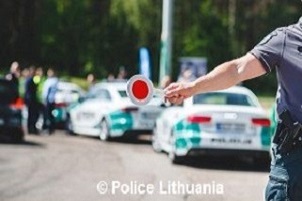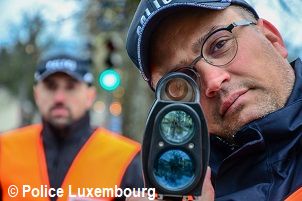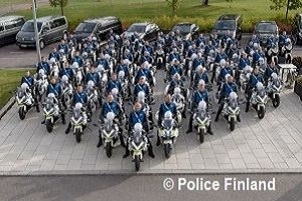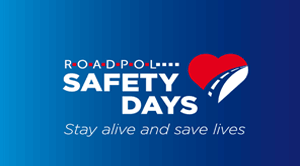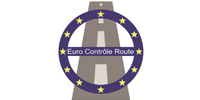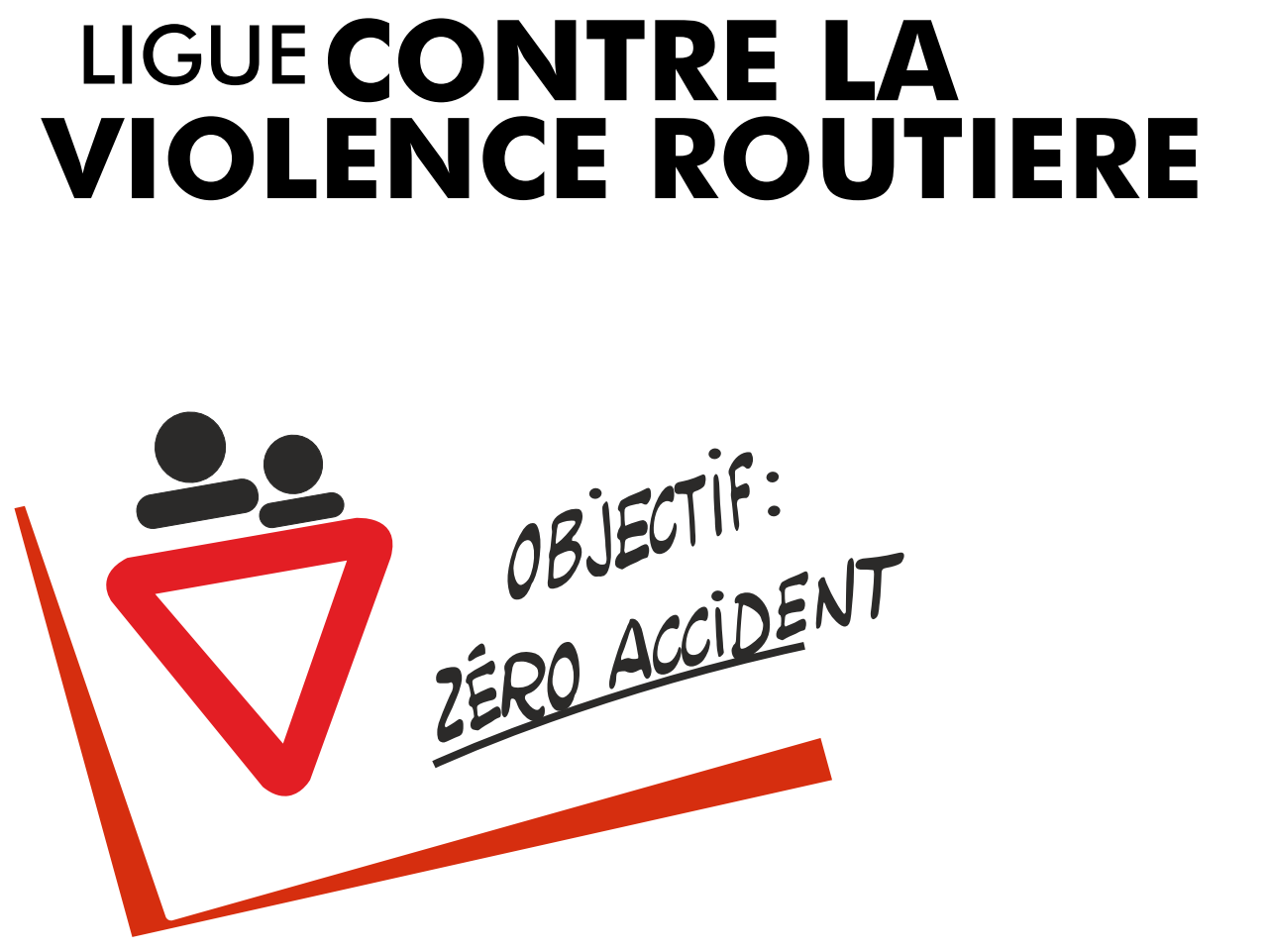93% Afraid Of Others'
Road Behavior
 The study shows sharing the road is a source of constant anxiety. PHOTO: ISTOCK14 OCT - 93% of European road users are afraid of others' road behaviour and see it as a source of major concern and anxiety, an Ipsos survey reveals.
The study shows sharing the road is a source of constant anxiety. PHOTO: ISTOCK14 OCT - 93% of European road users are afraid of others' road behaviour and see it as a source of major concern and anxiety, an Ipsos survey reveals.
The study, ordered by the VINCI Autoroutes Foundation called “Sharing the road” offers an overview of the behaviour of Europeans dealing with the coexistence of different modes of transport.
Modes
In Europe, the regular use of active modes of transport is still a distant second to car use. The car is, and remains, the primary mode of transportation in Europe. However, for their daily journeys, Europeans are also regular users of active modes. 66% regularly walk, and 22% regularly use a bicycle. Another 7% use a motorized two-wheeler, and 3% a scooter or hoverboard, the results show. Unsurprisingly, the Dutch are the most frequent users of bicycles (60%), well ahead of the Belgians (26%), Poles (25%) and Germans (25%). The French rank 9th (out of 11 European countries surveyed), just ahead of the British (8%) and the Spanish (7%). As far as walking is concerned, Spaniards walk the most (77%) and Belgians the least (51%).
Sharing
Regardless of the mode of travel, the prospect of sharing the road creates anxiety and tension. The diversity of modes of transport (cars, motorised two-wheelers, bicycles, PLEVs, walking) and the changes in their respective shares, in a constrained public space, makes cohabitation between the various users complex and often difficult. A substantial majority of users report a particularly tense environment on the road. Such fears may be linked to risky behaviour by other users. This is mentioned by 93% of them, and in particular: 92% of motorists, 90% of cyclists and 88% of motorcyclists. Pedestrians are also heavily affected by risk-taking by other road users. For example, 90% fear that a motorist will not stop to let them pass while they are on a pedestrian crossing, and 63% fear that a bicycle, scooter or hoverboard will run into them on a pavement. The fear of aggressive drivers of motor vehicles is also commonly cited by all users: 84% of car drivers, 84% of motorcyclists and 81% of cyclists.
Risks
Risk-taking and non-compliance with the basic rules of the road affect all categories of users and, overall, men more often than women. Despite the fact that phone use is recognized as one of the main sources of distraction, causing many accidents, more than half of motorists, motorcyclists and pedestrians use their phone while driving or walking: 66% of motorists (70% of men and 62% of women), 50% of regular motorcyclists, 58% of pedestrians, 35% of regular cyclists.
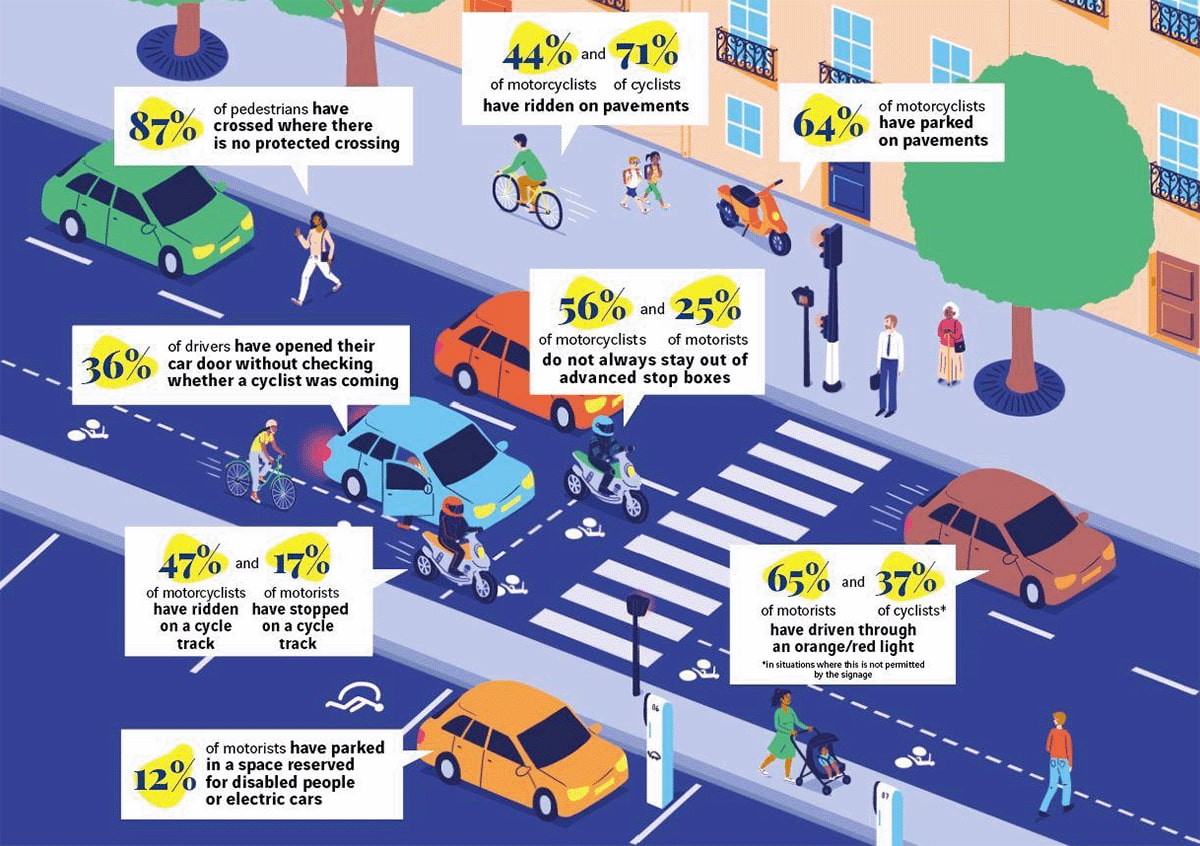 Red
Red
For pedestrians, failure to stop at a red light or the “red man" can be fatal, both for yourself and for other road users. Yet this offence is widely accepted by drivers, cyclists and pedestrians alike. For example: 65% of motorists admit that they sometimes drive through amber or red lights (66% of men and 63% of women). 37% of regular cyclists say that they sometimes do this in situations where they are prohibited from doing so by signage (41% of men and 34% of women). Also, 56% of pedestrians admit to crossing at a pedestrian crossing when the pedestrian light is red (59% of men and 54% of women).
Spaces
In addition to this dangerous behaviour, which is prohibited by the highway code, tension on the roads is also linked to non-respect of spaces reserved for certain categories of users. Urban and road planning must ensure that the road is shared between the different modes of transport, and changing mobility uses call for adaptations to address new needs. However, even in a constrained space, respect for the spaces reserved for certain categories of more vulnerable users must take precedence, in order to ensure their safety. Lack of space, traffic density, safety concerns ... these are all false “good reasons” for encroaching on the spaces reserved for other road users and putting them at risk.
Confessions
Each type of user has its own “guilty confession”. 71% of cyclists say they sometimes walk on pavements and 63% of pedestrians say they have been brushed by a bicycle, scooter or hoverboard on a pavement. 64% of motorcyclists admit to sometimes parking on pavements, 56% stop in advanced stop boxes, where they exist, 47% admit to riding on cycle paths and 44% on pavements. 36% of drivers say that they sometimes open their car door without checking if a cyclist is coming. 25% admit to encroaching on advanced stop boxes, where they exist. 29% double-park and 20% drive in bus lanes. Similarly, 17% admit that they sometimes stop or park on cycle paths, and 12% admit to parking in spaces reserved for people with disabilities, or in spaces reserved for electric vehicles. In addition, 90% of pedestrians who had already set foot on a pedestrian crossing have encountered motorists who failed to stop. 87% of pedestrians admit to sometimes crossing in places other than a designated crossing.
Respect
But does the use of different modes of transport lead to greater respect for other road users? One of the benefits of using a variety of modes of transport is to be able to put yourself in the shoes of others, to understand their constraints and vulnerability. 65% of drivers use at least one mode of transport other than walking - motorized two-wheelers, bicycles, scooters, etc. - (84% of Dutch and 40% of Britons). However, 77% say they are more cautious of other road users - checking blind spots, respecting cycle lanes and spaces reserved for disabled people, taking care when opening the door, etc., and 75% say they are more aware of the vulnerability of other road users. Among car drivers who regularly use bicycles, 65% consider that a bicycle journey requires them to pay more attention than when driving (69% of men and 60% of women) and 38% consider that they follow the road signs more than when driving.


